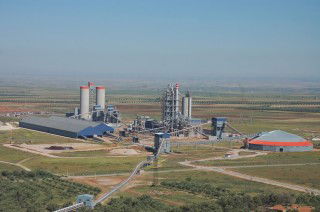With varying levels of economic growth across the region and reliant on overseas investment and trade with the UK and USA, these are uncertain times for the Caribbean. As a new player emerges in the regional cement market and prices fall, existing producers such as Cemex and Argos are strengthening their hand.
Economic activity in the Caribbean eased in 2016 with growth dropping to 3.43 per cent, compared to 4.18 per cent in the previous year, according to the IMF. The growth forecast for 2017 is 3.64 per cent. A recent report by the UN’s Economic Commission for Latin America and the Caribbean has highlighted that economic performance across the region will be uneven this year with some economies forecast to see five per cent growth while others will be lucky to record any expansion at all.
One of the strongest economies in the region is the Dominican Republic, which is expected to see a 5.1 per cent improvement in 2017, according to the UN. This follows GDP growth of 6.6 per cent in 2016 when revenue from tourism shot up by 10 per cent to US$6.6bn. Even sectors such as construction (+8.8 per cent) and local manufacturing (+4.28 per cent) recovered from their 2015 slump.
Elsewhere the outlook is not so positive. Islands such as the Bahamas are already slipping behind in their attempts to cut fiscal debt. Despite reforming its value-added tax system, government spending in the Bahamas has outstripped forecasts and national debt in February 2017 stood at US$6.7bn. The IMF has urged the country to focus on long-term infrastructure projects as a means of enhancing medium- to long-term GDP growth. The growth forecast for 2017 is just 1.5 per cent. The Inter-American Development Bank (BID) has now stepped in to fund a US$35m infrastructure loan aimed at improving the airports on the less-developed Family Islands.
Jamaica has seen a slight rise in its GDP forecasts with the IMF predicting 2.2 per cent growth in 2016 followed by 2.5 per cent in 2017. Praised for the economic programmes implemented by the government since 2013, the IMF has agreed to make US$1.7bn of funding available to Jamaica over the next three years to further stimulate its economy. However, the island must still meet strict stipulations of maintaining a budget surplus of seven per cent of GDP and cutting its debt to 120 per cent of GDP from a peak of 145 per cent in 2012.
